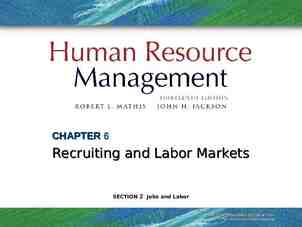WIPO/INV/BEI/02/3.a The Role of Universities in the Innovation
16 Slides185.50 KB
WIPO/INV/BEI/02/3.a The Role of Universities in the Innovation Cycle Document prepared by Ms. Kirsten Leute, Licensing Associate Office of Technology Licensing, Stanford University, Palo Alto, California (USA) 1
Agenda University-Industry Relations at Stanford OTL Background/Invention Process The Innovation Cycle, Silicon Valley, and how we play a part 2
Industry - University Interaction Development Office Office of Sponsored Research Industrial Contracts Office Office of Technology Licensing 3
OTL Mission To promote the transfer of Stanford technology for society's use and benefit while generating unrestricted income to support research and education 4
The Invention Process Evaluation Patenting Decision Marketing Strategy Licensing Strategy The License Continuing the Relationship 5
OTL Numbers Founded in 1969 - Revenue of 50K Revenues in FY 00-01: 41.2M Licenses executed in 00-01: 160 Disclosures received in 2001: 277 Total Disclosures: 4,000 6
OTL Numbers (cont.’d) Staff: 25 ; 16 do licensing Budget: 2.9M Patent costs: over 3M Royalty sharing: – 15% to OTL, then expenses, out-of-pocket – Net is split into thirds (inventors, departments, schools) 7
OTL Cycle Inventions Created Inventions Transferred to Industry Resources Obtained for Further Research 8
Innovation Cycle Identify an opportunity Resources Research and Development Distribution, Sales, Services Protect IP Promotion Manufacturing Final Product Design 9
Two Worlds University – Open Environment – Publication is key – Non-profit, but need Industry – Protected Environment – Proprietary Competitive Edge – For profit, need for survival, shareholders 10
University Inventor’s Role in Technology Transfer Disclose Inventions Identify Potential Licensing Prospects Participate in Patent Preparation and Prosecution Host Visits by Potential Licensees Provide input into the Licensing Strategy Consultant (optional) to Licensee(s) May be a Founder of a Start-up 11
What OTL Can Do For Industry Track specific areas of interest (4D database) Send relevant technologies Identify faculty with similar areas of interest Communicate/Follow-up Be innovative within policy boundaries Transfer Technology 12
Start-Up Tradition Hewlett-Packard Me-too mentality Resources No incubator at Stanford Equity Frederick Emmons Terman 13
Examples of Success Silicon Valley Yahoo!, Google Jim Clark 14
Take Home the Competitive Advantage Message Create good relationships Use your local resources (especially people) You need good people Must have win-win Create an open, flexible environment (i.e. be innovative) 15
Web Info http://otl.stanford.edu http://www.stanford.edu/group/ICO SU/Corporation interactions: http://corporate.stanford.edu/ - SU guide to companies - faculty research directories [email protected] 16





















